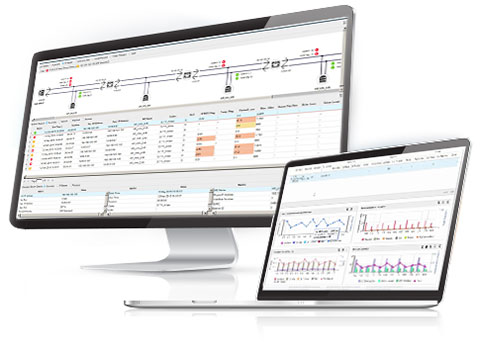
What is Application Performance Monitoring (APM)?
Application performance monitoring (APM) solutions monitor IT environments to determine if performance standards are being met. APM allows IT professionals to quickly spot problems and pinpoint user-impacting bugs.
Effective APM is able to measure application performance against business outcomes, ensuring maximum value to the organization. Being able to monitor and analyze multiple applications simultaneously, such as voice, video, and business data, regardless of whether they are hosted in private data center, cloud, web, SaaS, etc., is most advantageous.
This approach allows IT to see how different applications impact the performance of others, and how well they work together, which is crucial for proper management. At its best, APM solutions allow IT to fix problems before they impact end-users. Armed with critical insights, IT is able to reduce mean-time-to-resolution (MTTR).
Is Application Performance Monitoring the same as Application Performance Management?
While Application Performance Monitoring and Application Performance Management (both known as APM) are often viewed as interchangeable, there are differences in their meaning.
Application Performance Monitoring is a subset of Application Performance Management. Application Performance Management refers to an overall strategy of managing performance excellence. This involves monitoring your IT environment to identify when and where issues are occurring, and why they are occurring, so repairs can be made before these issues impact the end-user. Ideally, Application Performance Management allows IT to engage in proactive mitigation efforts.

What do APM tools measure?
To be certain the user experience is exceptional, IT needs to ensure that apps are operating normally and that every business transaction runs smoothly. APM tools monitor and measure performance metrics in real-time.
Tools typically measure:
- Application availability/uptime to check if applications, such as voice, video, business data, are online and complying with service level agreements
- Error rates to establish if performance is being degraded or is outright failing
- Request rates to monitor application traffic, focusing specifically on spikes, inactivity, and the numbers of simultaneous users
- Response times to uncover whether response speeds are impacting application performance
- Number of instances, in the case of cloud-based applications, so you are aware how many servers or apps are running
- User experience to determine how satisfied the customer is with the performance of the application
What are the different approaches to Application Performance Monitoring?
The landscape of applications is changing, which is why different approaches to APM are required. These might include:
- Application metrics-based monitoring – This approach measures server and applications metrics, looking at how many requests an app receives, and determining which specific URLs have been adversely impacted. The downside to this methodology is that it doesn’t provide insight into why this slowdown is occurring.
- Code-level performance-based monitoring – This approach uses code profiling and transaction tracing to monitor applications and reveal performance issues.
- Network-based monitoring – This approach measures application performance by looking at network traffic.
A combination of these approaches is generally viewed as providing the most comprehensive coverage.
Why do I need APM?
An effective Application Performance Monitoring solution - one that monitors and analyzes multiple applications simultaneously - can be key to ensuring your vital resources are protected and the user experience is the best it can be. By monitoring every transaction that runs through your application in real-time, you are able to determine if your apps are operating optimally. If issues arise, an APM solution can alert you to the problem and collect data that will reveal the source of the problem, whether it is the app itself, app dependencies, or the supporting infrastructure.
By correlating application performance to business outcomes, IT professionals can determine where, when and why problems occur, which allows for proactive mitigation efforts. Armed with the knowledge delivered by an APM solution, IT can modify the application environment to head off similar problems before they impact the business and adversely affect end-users. An APM solution eliminates the need to manually search individual event logs or build synthetic monitors, saving time and associated costs.
What is Synthetic Performance Monitoring?
Synthetic performance monitoring involves sending out automated, simulated transactions from a robot monitoring client to an application, thereby simulating activity by a typical user. This type of monitoring can be conducted within the firewall to ensure that all servers within a data center are operating properly.
It can also be used outside the firewall to deliver insights into the overall availability and performance of servers and applications. Testing scripts and server calls are sent at regular intervals to monitor systems and gauge responsiveness in order to uncover issues before actual users are impacted.
With today’s increased reliance on remote working, it is imperative to test the same service from all user location types to ensure the quality of service is uniform for headquarters employees, home users, and branch office workers alike
What is Synthetic Transaction Monitoring?
By actively testing applications using synthetic monitoring techniques, IT professionals are able to measure uptime, performance, and response times of critical business transactions. This is done through the use of algorithms designed to evaluate application behavior and uncover the root cause of potential issues so they can be resolved before they affect real users.


